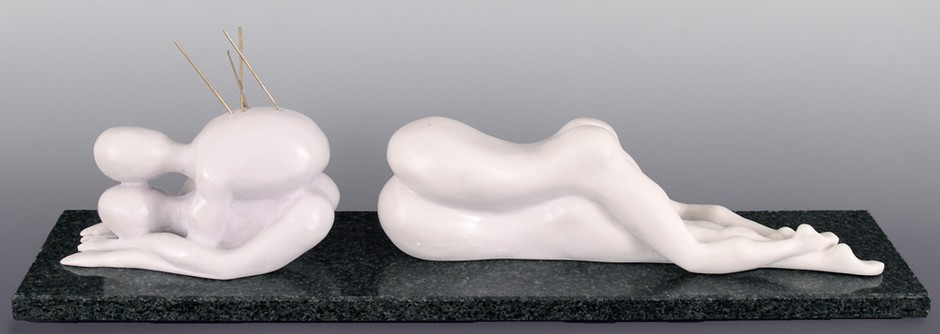Dean of Portuguese art and one of the great names of Portuguese and European Surrealism, Cruzeiro Seixas was born on December 3rd, 1920 in Amadora. In his long artistic journey, he has an expressionist phase, another neo-realist one and another, beginning in the late 40s, more prolonged, in which he integrates the Portuguese Surrealist movement, alongside Mário Cesariny, Carlos Calvet, António Maria Lisboa, Pedro Oom and Mário Henrique Leiria.
He was one of its precursors and considered one of its greatest exponents, considering that the fantastic surrealism visible in his work was inspired by the work of the artist De Chirico. He is the author of a vast work in the field of drawing and painting, but also in poetry, sculpture and objects/sculpture.
In 1952 he moved to Angola, where he held several individual exhibitions and projects in the area of museology. In 1964, fleeing the colonial war that was going on, he decided to undertake a trip to Europe. Along its path, it has numerous individual and group exhibitions in important museums and galleries, in Portugal and abroad, with several prizes and distinctions, including a scholarship from the Calouste Gulbenkian Foundation, in 1968 and the SocTip “Artist of the Year” award, in 1989.
In 1999 he donated his entire collection to the Cupertino de Miranda Foundation with a view to setting up a Study Center and Museum of Surrealism. In October 2012, the Sociedade Portuguesa de Autores awarded the Medal of Honor to Cruzeiro Seixas in recognition of his long and solid artistic career as a painter and poet. With the same aim, Galerias Perve and the Municipality of Oeiras inaugurated the exhibition "Tribute to Cruzeiro Seixas - A step forward in Africa", at the Cultural Center of Palácio do Egipto, in Oeiras.
In 2018 he was honored at the age of 97 by President Marcelo Rebelo de Sousa and by the Centro Português de Serigrafia, editor of his work for many years, which launched, on the occasion, the Catalog of Graphic Works and Multiples of Art by the artist.
His work is widely known and easily identified, for its personal and non-transferable mark, and for the distinctive character that it imprints on all his pieces. He is represented in important collections such as the Chiado Museum, the Calouste Gulbenkian Foundation, the National Library of Portugal, the Tomar Library, the Cupertino de Miranda Foundation, the Machado de Castro Museum in Coimbra, the Castelo Branco Museum and the António Prates Foundation.
He passed away in November 2020, close to completing his centenary.
Centro Português de Serigrafia © 2025
Thank you very much for subscribing the CPS newsletter.
